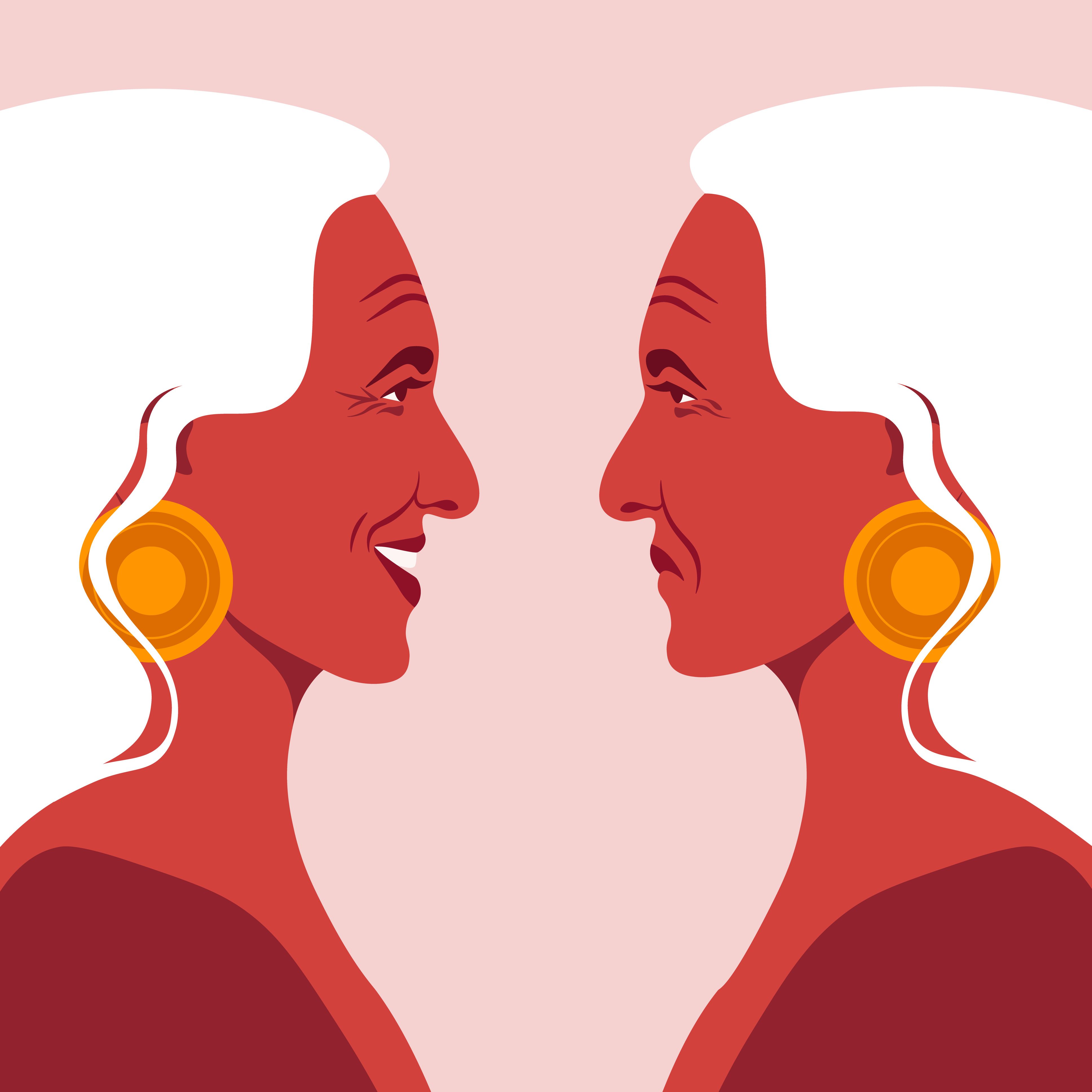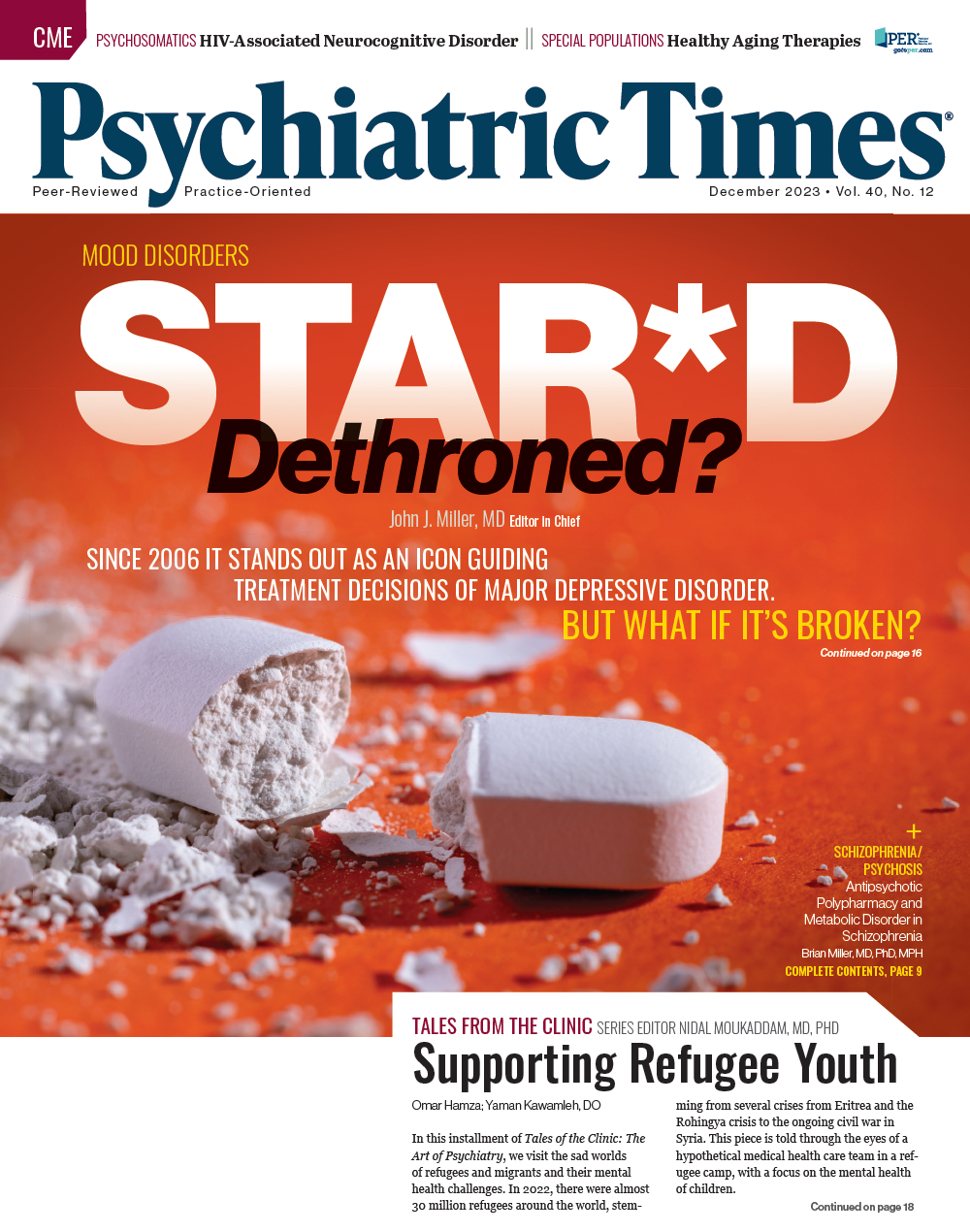News
Article
Psychiatric Times
Assessment and Management of Bipolar Disorder in Older Adults
Author(s):
OABD is a significant concern among older adults, characterized by unique presentations and comorbidities. Here's what you need to know.
moremar_AdobeStock

SPECIAL REPORT: GERIATRIC PSYCHIATRY
Bipolar disorder is a psychiatric condition characterized by recurrent episodes of mania or hypomania and depression, as defined in the DSM-5,1 which classifies bipolar disorder into 2 subtypes: bipolar I disorder and bipolar II disorder.
Bipolar I is diagnosed when an individual experiences at least 1 manic episode alongside major depressive and/or hypomanic episodes. In contrast, bipolar II is diagnosed when an individual experiences at least 1 hypomanic episode and at least 1 major depressive episode, without any manic episodes.
Although bipolar disorder is less prevalent in older adults than in younger individuals, evidence suggests that there will be a growing number of older adults with bipolar disorder in the coming decades.2,3 Between 1980 and 1998, the frequency of late-onset bipolar disorder increased from 1% to 11%.4
The International Society for Bipolar Disorders Task Force defines older age bipolar disorder (OABD) as bipolar disorder that occurs in individuals 50 years and older,5 with a quarter of all cases of bipolar disorder occurring in those 60 years and older, and more than 10% in individuals 70 years and older.6 OABD has a point prevalence of 0.1% to 0.5% and a lifetime prevalence of 0.5% to 1.0%.7 Among older adults diagnosed with mood disorders, 10% to 25% are found to have bipolar disorder.8,9
Presentation of OABD: Individuals with OABD often present with depression as the primary symptom rather than hypomania or mania. Their depressive episodes are typically more severe and recurrent. Unlike individuals with early onset bipolar disorder (EOBD), those with OABD often experience longer intervals between mood episodes and have a lower family history of mood disorders.10-12
Comorbidity in OABD: OABD is associated with a higher prevalence of comorbid medical conditions, including cardiovascular, respiratory, endocrine, and metabolic disorders. On average, individuals with OABD have 3 to 4 comorbid medical conditions, which can worsen outcomes and increase the risk of suicide.13-16
Neurological associations: Compared with EOBD, individuals with OABD are more likely to have associations with cerebrovascular disease and other neurological disorders. Neuroimaging studies reveal increased brain abnormalities, including white-matter hyperintensities and cortical sulcal widening.17-21
Psychiatric comorbidities: OABD is associated with common psychiatric comorbidities. The most prevalent comorbidity among individuals with OABD is alcohol use disorder, with high 12-month and lifetime prevalence rates. Other common psychiatric comorbidities include panic disorder, generalized anxiety disorder, and dysthymia.22
Diagnosis, Treatment, and Management of OABD
Diagnosing OABD and developing a tailored treatment approach are essential for managing this condition effectively. A detailed history is imperative when assessing individuals with OABD to rule out secondary causes of mood symptoms due to medical or neurological conditions, drug interactions, or substance abuse.23
Diagnosis: Although no specific screening tools exist for OABD, several instruments can help quantify and qualify its symptoms. These include the Mood Disorder Questionnaire and the Structured Clinical Interview for DSM-5. Following screening, DSM-5 criteria can be used to confirm the diagnosis of bipolar disorder.24
Nonpharmacological treatments: Psychotherapies for OABD have limited evidence, but medication adherence skills training and a manual-based medical care model have shown promise in improving medication adherence and overall quality of life among older individuals with bipolar disorders.25,26
Pharmacological treatments: Treatment guidelines for OABD are generally similar to those for EOBD but require closer monitoring because of increased medical comorbidities. Common medications used to treat OABD include lithium, anticonvulsants, antipsychotics, antidepressants, and electroconvulsive therapy (ECT).27
Lithium: Lithium remains a preferred monotherapy drug for maintenance treatment in OABD. It may reduce the risk of suicide and cognitive decline in older individuals but requires careful monitoring because of the potential for adverse effects.27-30
Anticonvulsants: Valproic acid is increasingly used in OABD, although its efficacy relative to lithium is inconclusive. Carbamazepine is an option for specific presentations of OABD. Lamotrigine is considered a good choice because of its better cognitive profile.27
Antipsychotics: A variety of antipsychotics have been approved for the treatment of bipolar disorder. Quetiapine, lurasidone, and aripiprazole are effective options for older individuals. Care should be taken because of the risk of cerebrovascular adverse events.31-33
Antidepressants: Although antidepressants can be helpful in reducing admissions for manic/mixed episodes, their use requires careful consideration of the risk-benefit profile because they may increase the risk of manic episodes.34
ECT: ECT is a treatment option for severe or refractory OABD symptoms, catatonia, psychosis, suicidality, and agitation. It has been found to be safe and effective in older adults.27,35
Treatment Algorithm
A proposed treatment algorithm for OABD suggests a minimum of a 3- to 4-week trial of an initial medication followed by possible medication combinations for nonresponders. Medication should be continued for at least 6 to 12 months in individuals who respond adequately. Inadequate medication adherence and comorbid substance use disorder can reduce treatment response.36
Concluding Thoughts
OABD is a significant concern among older adults, characterized by unique presentations and comorbidities. Treatment, which includes psychotherapies and medication, must be carefully tailored for this population. Early diagnosis and appropriate management are crucial to improving the quality of life for older individuals with bipolar disorder.
Dr Tampi is professor and chairman of the Department of Psychiatry at Creighton University School of Medicine and Catholic Health Initiatives Health Behavioral Health Services in Omaha, Nebraska. He is also an adjunct professor of psychiatry at Yale School of Medicine.
References
1. Bipolar disorders. In: Desk Reference To The Diagnostic Criteria From DSM-5. American Psychiatric Publishing, Inc; 2013:65-92.
2. Montes JM, Alegria A, Garcia-Lopez A, et al. Understanding bipolar disorder in late life: clinical and treatment correlates of a sample of elderly outpatients. J Nerv Ment Dis. 2013;201(8):674–679.
3. Dols A, Beekman A. Older age bipolar disorder. Clin Geriatr Med. 2020;36(2):281-296.
4. Almeida OP, Fenner S. Bipolar disorder: similarities and differences between patients with illness onset before and after 65 years of age. Int Psychogeriatr. 2002;14(3):311-322.
5. Sajatovic M, Strejilevich SA, Gildengers AG, et al. A report on older-age bipolar disorder from the International Society for Bipolar Disorders Task Force. Bipolar Disord. 2015;17(7):689-704.
6. Sajatovic M, Blow FC, Ignacio RV, Kales HC. Age-related modifiers of clinical presentation and health service use among veterans with bipolar disorder. Psychiatr Serv. 2004;55(9):1014-1021.
7. Sajatovic M, Chen P. Geriatric bipolar disorder. Psychiatr Clin North Am. 2011;34(2):319-vii.
8. Depp CA, Jin H, Mohamed S, et al. Bipolar disorder in middle-aged and elderly adults: is age of onset important? J Nerv Ment Dis. 2004;192(11):796-799.
9. Yassa R, Nair V, Nastase C, et al. Prevalence of bipolar disorder in a psychogeriatric population. J Affect Disord. 1988;14(3):197-201.
10. Stone K. Mania in the elderly. Br J Psychiatry. 1989;155:220-224.
11. Shulman KI, Tohen M, Satlin A, et al. Mania compared with unipolar depression in old age. Am J Psychiatry. 1992;149(3):341-345.
12. Tohen M, Shulman KI, Satlin A. First-episode mania in late life. Am J Psychiatry. 1994;151(1):130-132.
13. Gildengers AG, Whyte EM, Drayer RA, et al. Medical burden in late-life bipolar and major depressive disorders. Am J Geriatr Psychiatry. 2008;16(3):194-200.
14. Kilbourne AM, Post EP, Nossek A, et al. Improving medical and psychiatric outcomes among individuals with bipolar disorder: a randomized controlled trial. Psychiatr Serv. 2008;59(7):760-768.
15. McIntyre RS, Konarski JZ, Soczynska JK, et al. Medical comorbidity in bipolar disorder: implications for functional outcomes and health service utilization. Psychiatr Serv. 2006;57(8):1140-1144.
16. Juurlink DN, Herrmann N, Szalai JP, et al. Medical illness and the risk of suicide in the elderly. Arch Intern Med. 2004;164(11):1179-1184.
17. Subramaniam H, Dennis MS, Byrne EJ. The role of vascular risk factors in late onset bipolar disorder. Int J Geriatr Psychiatry. 2007;22(8):733-737.
18. Lloyd AJ, Moore PB, Cousins DA, et al. White matter lesions in euthymic patients with bipolar disorder. Acta Psychiatr Scand. 2009;120(6):481-491.
19. Tamashiro JH, Zung S, Zanetti MV, et al. Increased rates of white matter hyperintensities in late-onset bipolar disorder. Bipolar Disord. 2008;10(7):765-775.
20. Sarnicola A, Kempton M, Germana C, et al. No differential effect of age on brain matter volume and cognition in bipolar patients and healthy individuals. Bipolar Disord. 2009;11(3):316-322.
21. Young RC, Nambudiri DE, Jain H, et al. Brain computed tomography in geriatric manic disorder. Biol Psychiatry. 1999;45(8):1063-1065.
22. Goldstein BI, Herrmann N, Shulman KI. Comorbidity in bipolar disorder among the elderly: results from an epidemiological community sample. Am J Psychiatry. 2006;163(2):319-321.
23. Tampi RR, Joshi P, Bhattacharya G, Gupta S. Evaluation and treatment of older-age bipolar disorder: a narrative review. Drugs Context. 2021;10:2021-1-8.
24. Hirschfeld RM, Williams JB, Spitzer RL, et al. Development and validation of a screening instrument for bipolar spectrum disorder: the Mood Disorder Questionnaire. Am J Psychiatry. 2000;157(11):1873-1875.
25. Depp CA, Lebowitz BD, Patterson TL, et al. Medication adherence skills training for middle-aged and elderly adults with bipolar disorder: development and pilot study. Bipolar Disord. 2007;9(6):636-645.
26. Kilbourne AM, Post EP, Nossek A, et al. Service delivery in older patients with bipolar disorder: a review and development of a medical care model. Bipolar Disord. 2008;10(6):672-683.
27. Aziz R, Lorberg B, Tampi RR. Treatments for late-life bipolar disorder. Am J Geriatr Pharmacother. 2006;4(4):347-364.
28. Sajatovic M, Madhusoodanan S, Coconcea N. Managing bipolar disorder in the elderly: defining the role of the newer agents. Drugs Aging. 2005;22(1):39-54.
29. Kessing LV, Søndergård L, Kvist K, et al. Suicide risk in patients treated with lithium. Arch Gen Psychiatry. 2005;62(8):860-866.
30. Kessing LV, Forman JL, Andersen PK. Does lithium protect against dementia? Bipolar Disord. 2010;12(1):87-94.
31. Atypical antipsychotic medications: use in adults. Centers for Medicare & Medicaid Services. October 2015. Accessed August 14, 2022.https://www.cms.gov/Medicare-Medicaid-Coordination/Fraud-Prevention/Medicaid-Integrity-Education/Pharmacy-Education-Materials/Downloads/atyp-antipsych-adult-factsheet11-14.pdf
32. McIntyre RS, Cha DS, Kim RD, Mansur RB. A review of FDA-approved treatment options in bipolar depression. CNS Spectr. 2013;18(suppl 1):4-21.
33. Sajatovic M, Calabrese JR, Mullen J. Quetiapine for the treatment of bipolar mania in older adults. Bipolar Disord. 2008;10(6):662-671.
34. Schaffer A, Mamdani M, Levitt A, et al. Effect of antidepressant use on admissions to hospital among elderly bipolar patients. Int J Geriatr Psychiatry. 2006;21(3):275-280.
35. Wilkins KM, Ostroff R, Tampi RR. Efficacy of electroconvulsive therapy in the treatment of nondepressed psychiatric illness in elderly patients: a review of the literature. J Geriatr Psychiatry Neurol. 2008;21(1):3-11.
36. Tampi RR, Joshi P, Bhattacharya G, Gupta S. Evaluation and treatment of older-age bipolar disorder: a narrative review. Drugs Context. 2021;10:2021-1-8.







